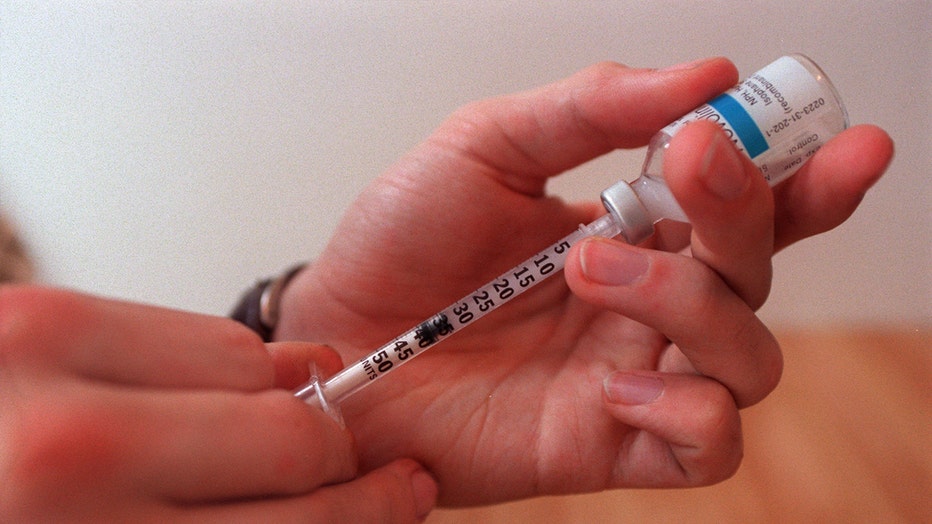1 in 5 American adolescents are prediabetic and at high risk of type 2 diabetes, study finds
LOS ANGELES - Prediabetes, the condition which ultimately leads to type 2 diabetes if not managed, is on the rise among American youth, according to a study published in the journal JAMA Pediatrics Monday.
About a quarter of young adults and a fifth of adolescents in the United States have prediabetes, a condition that causes blood sugar levels to be elevated, but not enough to warrant a type 2 diabetes diagnosis, and which places adolescents and young adults at an elevated risk of developing type 2 diabetes, chronic kidney disease and cardiovascular disease.
These numbers have been rising over the past decade, and the new research found that prevalence reached an estimated 18 percent among adolescents (aged 12 to 18) and 24 percent among young adults (19 to 34).
A 2012 study predicted that the prevalence and incidence of type 2 diabetes in US adolescents is expected to quadruple in the next decades, so monitoring prediabetes incidence and prevalence rates is an important part of keeping America’s youngest demographic healthy.
"Until recently, young children and teens almost never got type 2 diabetes, which is why it used to be called adult-onset diabetes," according to the U.S. Centers for Disease Control and Prevention.
Type 2 diabetes develops over years and has been linked to obesity, and it causes the body to become less responsive to insulin, which is responsible for regulating glucose levels in the bloodstream. Type 1 diabetes, by contrast, is an autoimmune condition which occurs when the pancreas doesn’t produce enough insulin, or doesn’t produce insulin at all, and it is the type most commonly associated with children.

Prediabetes, the condition which leads to type 2 diabetes, is on the rise among American adolescents and young adults. (JOEY MCLEISTER/Star Tribune via Getty Images)
Now, the CDC warns, some kids are developing type 2 diabetes as young as 10 years old, which the agency points out is closely related to the obesity epidemic. About one-third of all American youth are now overweight.
To get a better understanding of the trend, researchers performed a cross-functional analysis of the 2005-2016 National Health and Nutrition Examination Survey (NHANES), with a total participant pool of 5,786 American adolescents and young adults.
They found that prevalence of prediabetes was lower among adolescents than young adults, and additionally, that it was significantly higher in male versus female individuals and in those with obesity overall.
Obesity has long been linked to type 2 diabetes, and the findings of the current study reinforce this link — more than a quarter of obese adolescents and a third of young adults involved in the study were found to have prediabetes. By comparison, less than 17 percent of their normal-weight peers across both age groups were found to have prediabetes.
When it came to the gender split, male individuals were found to be almost twice as likely to have prediabetes. The prevalence of prediabetes in male adolescents was 22.5 percent compared to 13.4 percent of adolescent girls, while 29.1 percent of young men were found to be prediabetic compared to 18.8 percent of young women.
While the increase in incidence and prevalence among children is alarming, the number of adults with prediabetes is also deeply concerning — according to the CDC, 84 million Americans have prediabetes, but less than 10 percent are aware of it.
“The finding that a large proportion of adolescents and young adults with obesity already present glucose metabolism abnormalities is of great public health concern given the sharp increase in type 2 diabetes in adolescence,” the study’s authors said.
But many studies on the effectiveness of intervention methods among adult populations at high risk of developing type 2 diabetes have proven that the disease can be prevented or at least delayed with lifestyle modifications, such as changing diet and exercising regularly.
This presents hope that similar lifestyle interventions could reverse the trend of increasing numbers of prediabetic adolescents and young adults, but no such similar studies have been performed in the adolescent population.
The CDC says that kids who get type 2 diabetes are usually diagnosed in their early teens, and this is “an important reason to help your kids take charge of their health while they’re young.”

